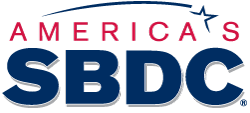I’m a lucky guy. For work, I get to talk to hundreds of entrepreneurs and people who help small business owners. I’ve talked to piano teachers, wedding photographers, and roller-derby merchants. I’ve talked to bloggers, designers, and musicians. I even talked to a guy building a castle for his business in New England. Stone by stone. See what I mean? Inspirational, creative stuff.
A lot of them have one thing in common: they know they should be online, but something is keeping them back.
What is it? Is it too technical? Is it like learning a new language? Maybe. In a lot of cases, it’s all of the stuff they think they need to worry about that holds them back: cloud-based computing, HTML, WordPress,Twitter, A/B split testing, analytics, metadata, SEO, image resolution.
Listen, getting online is a lot like learning anything else. No one pulls out Rachmaninoff when they first start learning to play the piano. They learn Chopsticks. They learn Twinkle Twinkle Little Star. They start small, get good, and then go bigger. Getting online is the same. There are three initial steps that you can complete in a couple of hours, and once you’re done, you’ll have something cool to put on your new business cards. (more…)

 When unexpected and costly building renovations threatened to delay or possibly end Ray Reinders’ dream of launching his own IT business, he turned to the Wisconsin Small Business Development Center (SBDC) at UW Oshkosh. SBDC director, Colleen Merrill, was instrumental in connecting Link Computing with financial resources that supported the start of the business in October 2013.
When unexpected and costly building renovations threatened to delay or possibly end Ray Reinders’ dream of launching his own IT business, he turned to the Wisconsin Small Business Development Center (SBDC) at UW Oshkosh. SBDC director, Colleen Merrill, was instrumental in connecting Link Computing with financial resources that supported the start of the business in October 2013. Every small business should have a basic understanding of the laws that apply to protecting intellectual property. It is the only way a company will be able to protect their unique creations and ideas from competitors. There are four major ways a small business can obtain legal protection for intellectual property (IP).
Every small business should have a basic understanding of the laws that apply to protecting intellectual property. It is the only way a company will be able to protect their unique creations and ideas from competitors. There are four major ways a small business can obtain legal protection for intellectual property (IP).